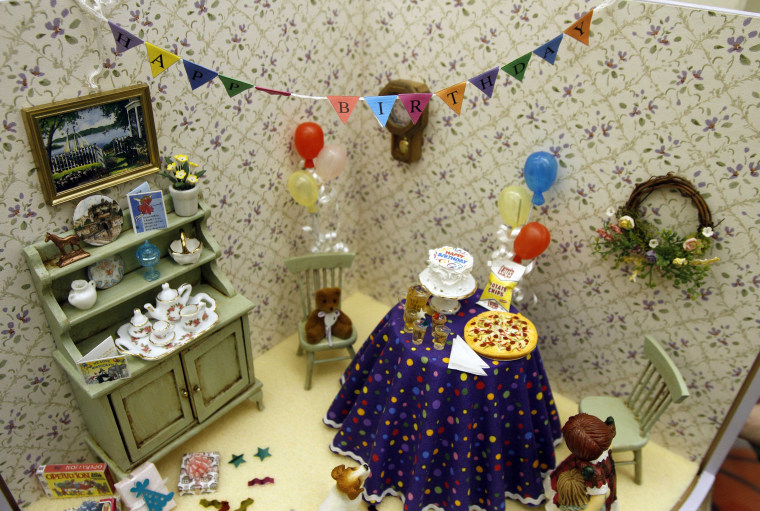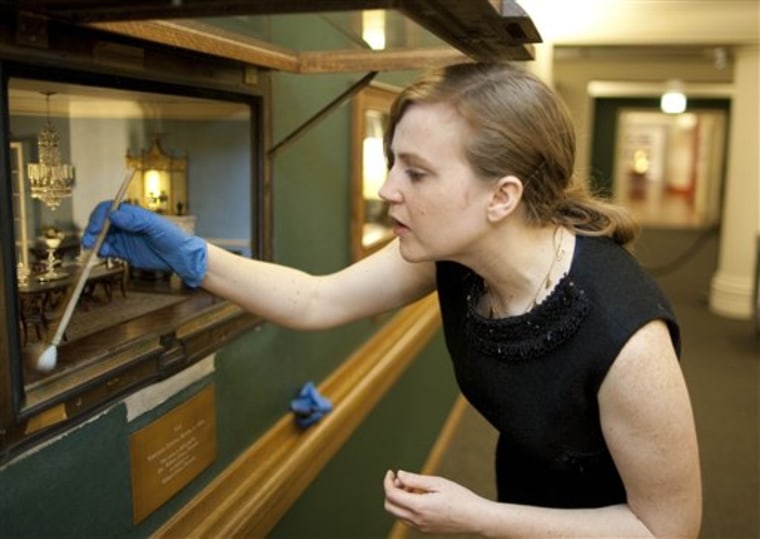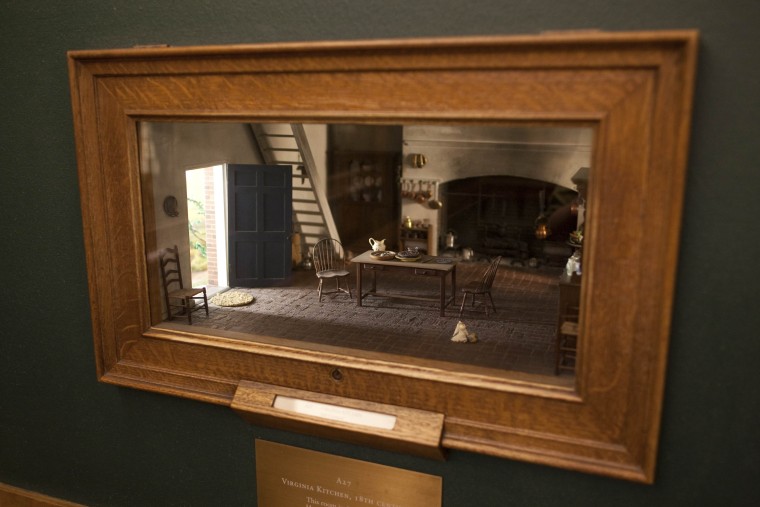Third-grader Jillian Beckman and her grandmother Sally Beckman peered through the glass, looking at the miniature rooms at The Art Institute of Chicago before deciding that their favorite tiny pieces in the intricately crafted historic spaces were the beds.
"When you look at them, they're really realistic," 8-year-old Jillian said, after seeing the Thorne Miniature Rooms with her family while on spring break. "Even though they're small, it seems they're big. Like you can walk into the rooms."
The 68 rooms showcase European, American and Asian interiors and furnishings from the 17th century through the 1930s. They were largely created and commissioned between 1933 and 1937 by Chicago socialite Narcissa Ward Thorne (although she largely went by Mrs. James Ward Thorne).
The rooms, designed on a 1-inch to 1-foot scale, have titles like "English Great Room of the Late Tudor Period" and "Tennessee Entrance Hall." The family-friendly museum exhibit attracts many visitors with children.
More recently, the rooms have served as inspiration for author Marianne Malone, who used the collection as the setting for "The Sixty-Eight Rooms," a young readers' novel published in February by Random House. Malone's story follows sixth-graders Ruthie and Jack as they shrink so small they can explore the rooms themselves.
The book draws on Malone's childhood visits to the miniature rooms as well as visits she made with her daughters. As she researched the novel, Malone found herself visiting the rooms another dozen times, checking on details.

"There's sort of a gripping in your stomach sometimes when you see something that really moves you and I felt that way about the rooms as a kid," Malone said. "They're so much better than any dollhouse I've ever seen."
The floor in the exhibit space has a raised step, so children can climb for a glimpse into displays filled with dinner plates as big as thumbnails and sofas just inches long.
"It's something about being dominant over something that is so charming and diminutive," said Lindsay Mican Morgan, the exhibit's curator. "They can imagine and enjoy the style. I feel like kids, adults too, are able to take authorship and appreciate the style more this way."
It's not unusual to see three generations of a family visiting the rooms, said Malone, who divides her time between Urbana, Ill., and Washington.
Visiting the rooms with her granddaughter made the exhibit more exciting, said Sally Beckman.

"Just with their little eyes, what they see and what I see," said Beckman, of Toledo, Ohio. Her granddaughter's family was visiting from suburban Dallas.
Although she did some of the artwork, Thorne functioned as more of a funder and director of the project, Morgan said. Thorne would seek out top-of-the-line artists to execute each part of the rooms, such as rugs, wall paintings and ceiling carvings. Thorne donated the rooms to the museum before her death in 1966.
"Every little element of her life was devoted to the history of beautiful objects," Morgan said. "It was completely her passion, her whole life."
Thorne's vision teaches others to follow their own passions, Malone said.
"She could have just kept her little passion in a more accepted or conventional scale, but she didn't," Malone said. "She just really went for it."
While the rooms are filled with painstakingly chosen details, they are devoid of people. It was a deliberate choice on Thorne's part, Morgan said, because she didn't want to ruin the illusion and have the rooms look fake.
"In lieu of them, she would put objects in to clue you in that someone had just been there," Morgan said. For example, glasses may be on a desk with an open book, chairs are pulled out from under desks and toys are left on the floor.
Vases are on a fireplace and tiny tea cups sit with a tea pot on a side table. There even are objects in some of the drawers, and one of the clocks actually works.
More than 500 sketches were made for certain pieces of furniture, mirrors, clocks, harps and chandeliers.
Adding to the precision approach, Thorne and her team of designers lit rooms according to certain times of day — some rooms are lighter and others darker. In other rooms, viewers can see parts of trees outside windows or portions of adjoining rooms.
All of this allows for acting out a fantasy life in miniature, Malone said.
"This idea of looking into a world, I don't know what that is subliminally that captures people, but it's sure age-old," Malone said. "It set my imagination off."
